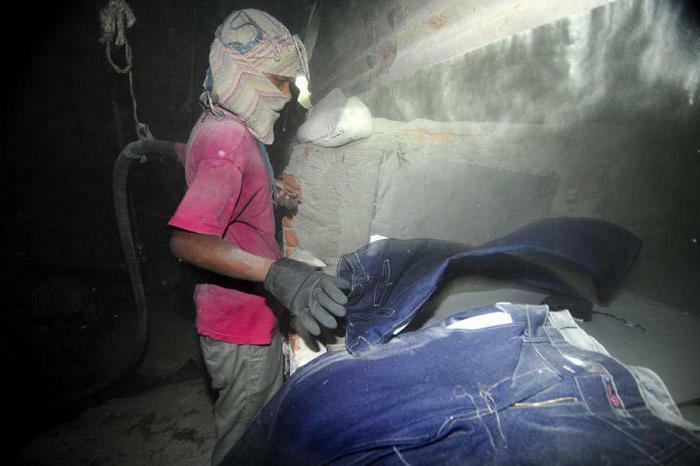Silicosis of the lung: causes, symptoms, treatment
Silicosis of the lungs is a disease that occurs as a result of professional activity. It usually occurs in people whose activities are related to the metallurgical, porcelain, machine building, mining industries. The disease occurs if the worker breathes air for a long time with dust containing silicon dioxide. The most dangerous is finely dispersed dust, in this case the inhaled particles begin to inhibit the alveoli and bronchioles, causing pathologies and fibrosis. The severity of the emerging symptoms and further complications is directly related to the amount of silicon that has entered the human lungs. If the worker did not use protective equipment and at that time the rate of inhaled dust was exceeded, such a person after three years will have to find out what is lung silicosis in acute form. 
The course of the disease
In many cases, this occupational disease has a latent course, although a complication in the form of tuberculosis or pathologies in the respiratory system is not ruled out. If the patient has an acute form of silicosis, he has fibrosis( scarring) of lung tissue. The disease continues even if a person has left his activity and no longer inhales harmful dust.
Description of the disease
Silicosis of the lung refers to a variety of pneumoconiosis. After an excess of dust containing silica has entered the respiratory organs, the lung tissue overgrows and small nodules are formed. The patient begins to feel a lack of oxygen and, as a consequence, his condition worsens.
Symptoms of the disease
One of the insidious diseases is silicosis of the lungs. Symptoms in this case may not manifest a long period, and at this time the disease continues to develop and as a result goes into a chronic stage. After a while the sick person begins to feel pain in the chest. Over time, severe pain is supplemented by shortness of breath, which is intensified during physical activity. Other signs of silicosis of the lungs are a dry cough with periodic sputum discharge. 
After the pathology has developed in the lungs, the symptomatology becomes more obvious. Now, shortness of breath can occur even without exercise, in a person's calm state. On a background there is a chronic bronchitis and a bronchial asthma, and painful sensations at this stage can become stronger. If the disease is accompanied by a dry cough and only sputum is sometimes visible, there are complications in the form of bronchiectasises. Externally, the sick person does not change.
Sometimes doctors diagnose, judging by the symptoms. About the disease they can say dry rattles and hard breathing. But more often the patient is referred to an X-ray and the diagnosis is confirmed by what is shown by fluorography. For the doctor, the picture opens with emphysema of the lungs, it can be seen that the mobility of the lung is reduced, from which the respiratory function is significantly impaired.
A pronounced form of the disease manifests itself in a constant cough, in which a lot of sputum is secreted. In the chest, there is a strong compressive pain, and some people notice cyanosis.
Other patients have hemoptysis, as well as problems in the operation of blood vessels and heart. If, in the presence of symptoms, the patient continues to inhale harmful dust, he may have a hypertrophic process that will lead to changes in the mucosal upper respiratory tract. 
Stages of silicosis disease
The whole process of the disease development can be divided into three stages:
- The first stage is accompanied by the appearance of dyspnea, immediately at a significant load. This opens a strong cough of a dry type, and near the chest there are noticeable pains or discomfort. X-rays can already show small nodules and scars that are just beginning to form.
- At this stage, the chest pain almost does not go away, and the cough becomes even stronger. Already begin to be noticed rigid, dryish wheezing, and breathing becomes heavier. Doctors notice a significant deformity of the lungs, this is what fluorography shows at this stage of the disease.
- With the onset of the third stage, the patient is more likely to experience shortness of breath. The person cough becomes regular. There are more mucus secretions, sometimes with blood.
Why it is necessary to respond to the symptoms of
 Once the disease has been identified, it is important to start treatment immediately. If you start the situation and do not react to the slightest signs, the person develop concomitant diseases of the respiratory tract, as well as complications of silicosis. So, against the backdrop of occupational disease may appear fungus lung, pulmonary hypertension, tuberculosis, emphysema, pneumothorax and others.
Once the disease has been identified, it is important to start treatment immediately. If you start the situation and do not react to the slightest signs, the person develop concomitant diseases of the respiratory tract, as well as complications of silicosis. So, against the backdrop of occupational disease may appear fungus lung, pulmonary hypertension, tuberculosis, emphysema, pneumothorax and others.
When should I go to a hospital?
There are circumstances that force a person to turn to a specialist, and they include:
- Preventive examination. Workers who have to stay in a dusty room should be examined twice a year by a pulmonologist. If a person does not notice the presence of symptoms, he still needs to do a fluorography.
- With chronic cough, no matter what character it is( wet, dry).
- Acute pain in the chest area( consult a doctor immediately).
- Severe cough, loss of appetite and frequent fatigue.
Silicosis of the lung: treatment and the necessary measures
 After detection of the disease, the first important measure is to stop contacting with silicon. Then the patient learns to carry out respiratory gymnastics. The attending doctor prescribes the patient to visit oxygen inhalations. Specific preparations are prescribed for the treatment. Some additionally apply folk recipes.
After detection of the disease, the first important measure is to stop contacting with silicon. Then the patient learns to carry out respiratory gymnastics. The attending doctor prescribes the patient to visit oxygen inhalations. Specific preparations are prescribed for the treatment. Some additionally apply folk recipes.
If an acute form is diagnosed, a person is prescribed bronchodilators inside. Samples are also taken for tuberculin. With a positive response, the patient is additionally assigned anti-tuberculosis drugs, for example "Isoniazid."Tuberculosis, developed against the background of silicosis, is treated by several means, usually not less than four. Among them, there must be "Rifampicin".
With a complicated course of the disease and developed fibrosis, the patient can not do without an operation for lung transplantation.
Patients who have 1 and 2 stages may prescribe a spa treatment.
Forecasts for treatment of
After the therapy was performed, the patient hopes for a full recovery, but the further condition depends on the stage at which the treatment was started. Silicosis of a mild chronic nature, accompanying a person for a long time, after therapy can completely recede. But if the acute form is diagnosed, complications appear in the body, more often it is fibrosis or pulmonary hypertension. In this case, the patient will have to fight and with these concomitant diseases. 
Prevention
If a person has to work in extreme conditions to reduce the risk of a disease such as silicosis of the lung, it is important for him to take measures to protect his health. To do this, he should not neglect protective equipment and clothing during work. In dusty conditions, the work day must be reduced, and a person has the right to work half-heartedly. Also worthy, adequate nutrition with the addition of milk, as well as observance of the correct regime of the day, is also necessary.
If you have to spend time in a dusty environment, you do not need to neglect the regular check-up and x-ray, because it is easier to prevent the disease than then do not know what to cure.
